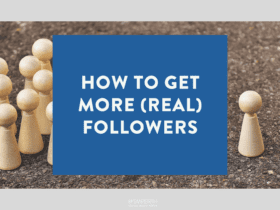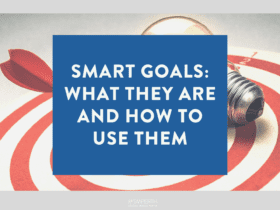For brands today, survival and, let’s be honest, success is increasingly dependent on marketers’ ability to harness the indomitable power of “social”.
That’s why we’ve assembled a glossary of the essential social media terms every entrepreneur ought to know to keep you ahead of the game.
Note: For the ultimate list of social media acronyms, check out Your Social Media Dictionary: The Acronym Edition.
- Affinities: relates to analytics. The measure of audience interest.
- Abandonment rate: the percentage of social customer service issues abandoned without a resolution.
- Algorithm: social media algorithms are rules-based procedures that determine the content users see in their Newsfeed(s). Ultimately algorithms have a significant effect on brand visibility. Paid media (advertising) is the only sure-fire way to increase ranking in an algorithm.
- Audience selector: relates to privacy settings on Facebook. A tool that allows you to choose the audience with which to share content.
- Avatar: a visual representation of a user online, for example, a profile picture.
- Average response time: average time it takes for a brand, company or individual to reply to a message.
- Bio: short for biography. All social platforms have some version of a “Bio”, and they are important for attracting new followers.
- Bitmoji: a customised emoji. Basically, emojis that look like you!
- Block: a useful way to control and protect your brand from troublesome or abusive users.
- Board: also known as a “Pin Board”, this is specific to Pinterest and a way to organise content. Content is “pinned” to Boards.
- Brand advocate: a customer who loves your product or service so much they go out of their way to share it. The ultimate word of mouth marketing!
- Brandjacking: hijacking of a brand to promote an agenda or damage a reputation. Most often they assume a brand’s online identity using fake accounts, unofficial branded hashtags etc.
- Caption: the descriptor on a photo. Most commonly encountered on Instagram, but also used on Facebook.
- Chatbots: artificial intelligence that lives in messaging apps that simulates “live” conversation. Most often used for customer service purposes.
- Check-In: associated with geotagging, a “check-in” is a Facebook and Foursquare term that lets users log their whereabouts.
- Clickbait: sensationalist or misleading content designed to seduce users to click through and therefore boost page views and ad revenue.
- Clickthrough rate: a metric that denotes the number of people who have clicked on a piece of content. The rate is calculated by comparing clicks with impressions. Commonly used in Search Engine Marketing (SEM).
- Community management: developing, nurturing and managing meaningful relationships in a social media community.
- Content curation: the process of sourcing and sharing content of value and presenting it to your audience in a meaningful way.
- Content marketing: a marketing strategy that attracts and retains customers through the creation and distribution of useful, and actionable content. Content includes, but is in no way limited to: videos, white papers, blogs, guides, photos, reports, infographics etc
- Conversion rate: a measure of the results of a call to action (CTA) for example: how many people “follow us”, “sign up for…” or “register for…”
- Crowdsourcing: leveraging an online community to assist in services, content, financing and ideas for your business.
- Dark social: a clandestine side of social media that is unable to be tracked and measured by analytics due to rigorous privacy settings. For example: WeChat and SnapChat.
- Disappearing content: most common to Snapchat and Instagram Stories, this is content that vanishes after a set amount of time.
- Earned media: user generated content involving a brand, but the brand exerts no control. For example: influencer marketing, referrals, online reviews.
- Engagement rate: a measure of how much social media users are interacting with your owned media.
- Facebook: the world’s most popular, free social media platform that allows users to create profiles, upload photos and video, send messages and keep in touch with friends, family and colleagues. Plus so much more!
- Facebook Fans: the people who like your Page.
- Facebook Group: communicate and share information within a group of users. Groups can be closed, public or secret.
- Facebook Live: a feature that allows users to stream live video and interact with fans in real time.
- Facebook Offers: create online or offline (in-store) offers and share these in an Offers ad or a post a brand Page.
- Facebook Reactions: users can register a response to content including: “Like”, “Love,” “Laugh,” “Wow,” “Sad,” and “Angry.”
- Favourite: an indication that someone likes your Tweet.
- Feed: also known as a Newsfeed, it is a data format that provides a steady stream of updates and information.
- Filter: an effect added to a photograph to enhance the image. Common across almost all platforms now.
- Firehose access: full access to all public posts and data shared on a network, in real time.
- Follower: on Twitter and Instagram, a fan of your page.
- Geofilter: special overlays on Snapchat that reflect the geographic location of the person taking the photo. Brands can pay to create their own Geofilters.
- Geostickers: location-specific Snapchat stickers.
- Geo tagging: a feature on platforms that allows location based sharing, used most often to “check in” at a given location or business, or to share where users are posting from.
- Geotargetting: allows users to target an audience according to their location.
- Handle: your account name on Twitter. (eg: @youraccount)
- Hashtag: (#) a discovery system. Hashtags are a way of organising content according to topic.
- Historical data: the huge volume of historical data on social networks and past conversations, which brands use to evaluate patterns and predict future trends.
- Impressions: the number of times a specific post has been displayed, regardless of whether someone has clicked it or not. This represents the number of times a post could have been read, and users can be exposed to multiple impressions of the same post.
- Inbound marketing: see content marketing.
- Influencer: a social media user with relevance, reach and resonance and therefore the capacity to “influence” their social media community. Social media influencers can be paid, unpaid or engaged on contra deals.
- Instagram: a free, online photo sharing app. A high growth social media platform now owned by Facebook.
- Instagram Direct: direct messaging, with image and video capabilities.
- Instagram Stories: disappearing photo and visual content.
- Klout Score: a numerical rating of online social influence: from 1 to 100. Scores are based on the size of social networks and how users interact with content.
- Like: a Facebook invention. An expression of support for content.
- LinkedIn endorsement: another user “endorses” your skills. A measure of credibility.
- LinkedIn influencer: a top industry leader or high profile professional invited to publish on the platform.
- LinkedIn recommendation: a written compliment from a co-worker, employer or connection.
- Live Stories: Snapchat specific. A curated stream of user submitted Snaps from various locations and events. Using location services at the same event location allows users to contribute to the Live Story.
- Live Tweet: to post comments and participate in Twitter conversations during an event.
- Marketing Automation: tactics and technology platforms that allow for high level, personalised content marketing at scale.
- Meme: relates to the spread of ideas. An idea, fashion, or behaviour that is communicated from person to person through media, speech, gestures, and other forms of communication.
- Mention: the act of tagging another user’s in a social media message.
- Messenger: instant, private messaging on Facebook.
- Microblogging: small, frequent quantities of content. For example: Twitter, Instagram or Tumblr.
- Paid media: advertising on social media.
- Paid Reach: the number of people who view your content as a result of paid media.
- Pins: content on Pinterest.
- Pinterest: a virtual corkboard of ideas and inspiration. Users publish content “Pins” to their “Board”.
- Organic Reach: the number of people who view your content without using paid promotion.
- Owned media: content created by the brand and published on that brand’s social channels.
- Reach: the total number of people who have received impressions of a post. Multiple reads of a post multiple times will create further impressions, but will not affect the reach.
- Regram: the act of reposting another Instagram user’s content.
- Repin: the act of reposting another Pinterest user’s content.
- Return on relationship: a measurement of the value gained from social media relationships. Difficult to define, but looks at sentiment analysis, engagement metrics and organic sharing rates.
- Retweet: the act of reposting another Twitter user’s tweet.
- Rich Pin: Pinterest-specific, it is a post that contains more information about the pictured service, product or idea.
- Sentiment: how people feel about a given topic or brand on social media. Sentiment can be measured: positive, neutral and negative, and according to categories defined by campaign goals, such as: “intent to purchase”, “referrals”, “positive word of mouth” etc.
- Scheduling: planning social media posts ahead of time. Social relationships platforms are helpful with this!
- Share of eye: a measurement of brand presence in images, basically a way to identify non-textual brand mentions. Image analysis technology recognises logos and quantifies brand value, allowing for 360-degree measurement of campaign ROI. Particularly useful for high visibility sponsorship arrangements,
- Share of voice: the percentage of relevant social media posts in a given category. Used to ascertain brand popularity against competitors in a specific online conversation.
- Snapchat: a photo and video messaging app that allows users to take photos and videos; add text, drawings, or emojis before sending. Individual messages only last up to 10 seconds before they disappear forever and are erased from the company’s servers.
- Snapchat Lenses: a feature that allows users to add animated masks to their Snapchat selfies. Brands can purchase sponsored lenses.
- Snap Stories: a string of snaps that are publicly visible and create a narrative. Snap Stories are only visible for 24 hours.
- Social Commerce: electronic commerce where purchasing is assisted by social media networks.
- Social customer service: identifying and resolving customer service issues using social media platforms.
- Social listening: the process of identifying, monitoring and assessing what is being said about a company, individual, product or brand.
- Social media analytics: the practice of gathering and analysing data from active social media channels to inform decision making. Often used to mine sentiment, manage online reputation, optimise engagement and support/customer service activities.
- Social media audit: an examination of a person/brand/organisation’s social media footprint to develop insights into how social media engagement can be optimised.
- Social media monitoring: listening and responding to brand and keyword mentions on social media.
- Social retargeting: extending the social media engagement beyond the social media platforms. For example, driving purchasing or enquiry behaviours on the brand website. Social retargeting uses the links shared through social channels to create retargeting pools that keep your brand and messages in front of the right people.
- Tag: a categorising keyword added to a social media post.
- Thread: a strand of messages which represent a conversation or part of a conversation.
- Trending topic: a topic that is being rapidly shared on social media and has attracted high level popularity. Trending topics tend to be temporary, but some turn into “viral posts”. Trending topics can be spontaneous like breaking news or planned, like new ad campaigns or events like elections and such.
- Troll: a social media user who is deliberately offensive or annoying. Aims to provoke another user or group of users.
- Twitter: users publish 140-character messages with photos, videos, and other content. Known for real-time and emergent discussions on breaking news stories and trends.
- Unfollow: the act of unsubscribing from another user’s account.
- Unfriending: removing someone from you list of contacts.
- Verified: a social media account is verified as authentic. This is determined by the social media provider
- Viral / “Gone Viral”: content, most often video, that is shared across social platforms at a rapid rate. Content does not and cannot “go viral” by choice or intent, the internet always has the final say!
- Vlogger: video blogger.









LET’S CONNECT